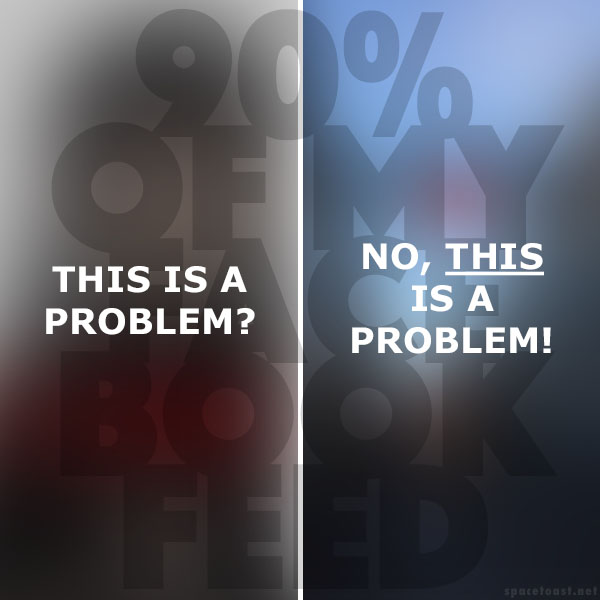If you can name it, it’s not a monster.
Trump Pence 2020 Posters
Umberto Eco on Fascism
It’s worth now revisiting 1995 when Umberto Eco–child of Italian Fascism–explained to us the 14 hallmarks of fascism, be it Italian, German, Spanish, Russian or otherwise: Ur-Fascism. Here’s a gloss in reverse order; ellipses mine, emphasis his.
14. Ur-Fascism speaks Newspeak… All the Nazi or Fascist schoolbooks made use of an impoverished vocabulary, and an elementary syntax, in order to limit the instruments for complex and critical reasoning. But we must be ready to identify other kinds of Newspeak, even if they take the apparently innocent form of a popular talk show.
13. Ur-Fascism is based upon a selective populism, a qualitative populism, one might say. In a democracy, the citizens have individual rights… For Ur-Fascism, however, individuals as individuals have no rights, and the People is conceived as a quality, a monolithic entity expressing the Common Will… Thus the People is only a theatrical fiction… There is in our future a TV or Internet populism, in which the emotional response of a selected group of citizens can be presented and accepted as the Voice of the People… Wherever a politician casts doubt on the legitimacy of a parliament because it no longer represents the Voice of the People, we can smell Ur-Fascism.
12. Since both permanent war and heroism are difficult games to play, the Ur-Fascist transfers his will to power to sexual matters. This is the origin of machismo (which implies both disdain for women and intolerance and condemnation of nonstandard sexual habits, from chastity to homosexuality). Since even sex is a difficult game to play, the Ur-Fascist hero tends to play with weapons—doing so becomes an ersatz phallic exercise.
11. In such a perspective everybody is educated to become a hero. In every mythology the hero is an exceptional being, but in Ur-Fascist ideology, heroism is the norm. This cult of heroism is strictly linked with the cult of death… The Ur-Fascist hero is impatient to die. In his impatience, he more frequently sends other people to death.
10. Elitism is a typical aspect of any reactionary ideology, insofar as it is fundamentally aristocratic, and aristocratic and militaristic elitism cruelly implies contempt for the weak. Ur-Fascism can only advocate a popular elitism. Every citizen belongs to the best people of the world, the members of the party are the best among the citizens, every citizen can (or ought to) become a member of the party. But there cannot be patricians without plebeians. In fact, the Leader, knowing that his power was not delegated to him democratically but was conquered by force, also knows that his force is based upon the weakness of the masses; they are so weak as to need and deserve a ruler…
9. For Ur-Fascism there is no struggle for life but, rather, life is lived for struggle. Thus pacifism is trafficking with the enemy. It is bad because life is permanent warfare…
8. The followers must feel humiliated by the ostentatious wealth and force of their enemies… However, the followers must be convinced that they can overwhelm the enemies. Thus, by a continuous shifting of rhetorical focus, the enemies are at the same time too strong and too weak…
7. To people who feel deprived of a clear social identity, Ur-Fascism says that their only privilege is the most common one, to be born in the same country. This is the origin of nationalism. Besides, the only ones who can provide an identity to the nation are its enemies. Thus at the root of the Ur-Fascist psychology there is the obsession with a plot, possibly an international one. The followers must feel besieged. The easiest way to solve the plot is the appeal to xenophobia…
6. Ur-Fascism derives from individual or social frustration. That is why one of the most typical features of the historical fascism was the appeal to a frustrated middle class, a class suffering from an economic crisis or feelings of political humiliation, and frightened by the pressure of lower social groups…
5. …Ur-Fascism grows up and seeks for consensus by exploiting and exacerbating the natural fear of difference. The first appeal of a fascist or prematurely fascist movement is an appeal against the intruders. Thus Ur-Fascism is racist by definition.
4. No syncretistic faith can withstand analytical criticism. The critical spirit makes distinctions, and to distinguish is a sign of modernism. In modern culture the scientific community praises disagreement as a way to improve knowledge. For Ur-Fascism, disagreement is treason.
3. Irrationalism also depends on the cult of action for action’s sake. Action being beautiful in itself, it must be taken before, or without, any previous reflection. Thinking is a form of emasculation. Therefore culture is suspect insofar as it is identified with critical attitudes. Distrust of the intellectual world has always been a symptom of Ur-Fascism… The official Fascist intellectuals were mainly engaged in attacking modern culture and the liberal intelligentsia for having betrayed traditional values.
2. Traditionalism implies the rejection of modernism. Both Fascists and Nazis worshiped technology, while traditionalist thinkers usually reject it as a negation of traditional spiritual values. However, even though Nazism was proud of its industrial achievements, its praise of modernism was only the surface of an ideology based upon Blood and Earth (Blut und Boden)… The Enlightenment, the Age of Reason, is seen as the beginning of modern depravity. In this sense Ur-Fascism can be defined as irrationalism.
1. The first feature of Ur-Fascism is the cult of tradition… As a consequence, there can be no advancement of learning. Truth has been already spelled out once and for all, and we can only keep interpreting its obscure message….
The New iPhone Doesn’t Have a Floppy Drive
Let me tell you a story. It begins with a confession.
I can’t wear earbuds. It feels like my ears are being sexually violated. I tried to make myself get used to them when I moved to LA, because I had them, and my headphones broke, and I was broke, and moving to LA has a lot to do with putting up with the feeling of sexual violation. It didn’t take.
After that sad chapter in my life, I settled on a range of small over-the-ear phones that were a thing at the time from a few manufacturers–speakers that clipped over the ears, with an under the chin cord but no band between them, and a nifty little spring-loaded reel that retracted the cord into the right-hand earphone when not in use. I wore a pair until the cord worked loose from the headphone jack (as usual), then another manufacturer’s pair until the same happened.
By then the world had moved on. Over-the-ear separates were out. They couldn’t be found. Not even on closeout.
I ended up sinking $65 into a set of Japanese imports from an Amazon shop. They came in a surprisingly garish Japanese white, in a garishly Japanese box.
Within a week of arriving, the cord snagged on a door handle in the Harvard CoOp and snapped right off the headphone jack. Have you ever tried to disassemble a stereo mini jack in hopes of re-soldering five hair-thin wires (stereo R +-, L +- and ground, I assume)? I have.
After that, I determined never to go back to wires. I got a cheap pair of behind-the-head Bluetooth headphones and wore them until the left speaker died–a good three years. With some research, I chose to drop some cash on a decent pair, and now live in a pair of Marshall Major II Bluetooth headphones.
Are there tradeoffs to going wireless? Sure. I have to recharge my headphones–once a week with the Marshalls, every day or two with the cheap pair. SUVs and their particularly overpowered Bluetooth systems tend to make the audio drop out now and then. That’s… honestly it. Any but the lowest-end pairs even let you plug a mini jack in and use them as wired headphones when you want.
So yes, Apple dropped the mini jack from the new iPhone, to free up space for an optically-stabilized camera and a better antenna, and make the phone waterproof down to about a meter beneath the surface. (Not to bury the lede.)
I’m never sure how much is really behind a large surge of indignation on the internet. Being basically an attention sucking machine, the public mouths and faces of those we encounter here are not only constructed, but constructed as economically as possible. (Economically from the standpoint of the internet’s real currency: Attention. Again, not to bury the lede.) Everyone is Dilbert in his underwear holding a business-suited puppet of himself up to the webcam for a teleconference.
I’m old enough to remember when Genesis did and Nintendo didn’t, when Facebook was MySpace for college students right down to the dorm room whiteboard skeuomorph, when the MCP was just a chess program, and when Apple released the original iMac–without a floppy drive.
I remember the gnashing, the whining, even from people who should have known better. USB flash drives barely existed and cost way too much–small hard drives ruled their niche then. Everyone doing serious work still had a Zip Drive (or even a Jaz Drive). Yes, the floppy was old, but it was venerable! It still Just Worked. It was cheap. It was standard. It was backward-compatible. It was 1.2MB a disk and not even that formatted, and that was shit even back then.
The headphone jack is on its way out, and we–all of us–are going to be fine.
Just Stop

Best Sellers
Just time this week to check in on the Times Best Sellers List…
Hardcover Fiction
| 1. | THE LORDBURN REPETITION, by Kluey Part Smith. (Niffen, $26.00.) Super spy Rex Coulter must stop a large thing from happening. |
| 2. | THE PERSPICACITY OF DOUBT, by Lucy Blovine. (Scor/Delfine, $26.50.) Summering on Wild Horse island, recent divorcee Hailiey McElle-Saphire meets an otherwise perfect man with a dark secret. |
| 3. | CHURNED, by James Patterson and Olivia Sciatica. (Buffet, $28.00.) Ribald O’Makepeace will stop at nothing to avenge his carpool. Patterson Vermeers his name onto an eleventh USA Original-grade potboiler this year. |
| 4. | ROBERT LUDLUM’S THE BOURNE BORING, by Eric Von Lustbader. (Taipei Holdings Corp, $24.99.) Renegade agents delve underground as Von Lustbader continues to serve out some karmic purgatory inside the long-dead corpse of Ludlum. |
| 5. | PIECES OF A LIFE ONCE LIVED, by Katherine Loft. (Shumberg, $26.00.) Nothing much happens. |
| 6. | A MURDER IN THE COLON, by Dee Brettfield. (Snorium Mystery, $23.95.) Questions must be answered when bodies begin turning up outside homicide dick-turned-doc Rue Level’s Hollywood practice in Brettfield’s latest colonoscopy-flavored opus. |
| 7. | HEART OF THE HEART, by Lisette Poe. (Snaf Books, $26.00.) A story about sisters in which they don’t just plain hate each other. |
| 8. | STAR WARS: QUORUM OF THE JEDI: THE FORCE AND ITS DISCONTENTS, by Callista Quing. (DF, $24.00.) A whole galaxy at war and it’s the same ten goddamn planets and cast members. Followup to Star Wars: Quorum of the Jedi: Lodgers of the Force. |
| 9. | JEREMIAH’S SWORD, by J. Luke Taper. (Swaggart Press, $23.99.) A young man’s flaming sword thrusts the spirit of God into the backs of the unrepentant in Taper’s post-Rapture Christian allegory. |
| 10. | DEAD IN THE FAMILY, by Charlaine Harris. (Ace, $25.95.) Sookie Stackhouse is exhausted in the aftermath of a Fae war. |
| 11. | PROFOUND TONE, by Paulo Coelho. (Shiv/Livertoot, $27.95.) The author of The Alchemist pads out another child chapter book plot with his trademark Buddhist Monk Voice. |
Hardcover Nonfiction
| 1. | THAT WEBSITE: THE BOOK, by Stu Borgen et. al. (eBooks iPublications, $22.99.) That website, in book form for some reason. Destined for the can. |
| 2. | IF IT WERE POSSIBLE TO HAVE SEX WITH A GENERATION, I WOULD HAVE SEX WITH THE GREATEST GENERATION, by Tom Brokaw. (Culthouse, $24.00.) Further wankery on the generation that beat the Depression, World War II, blacks and women. |
| 3. | MR. EIFFEL’S AWFULLY BIG TOWER, by Snake Morley. (B&W/Weege, $29.99.) New revelations on the temporary unpopularity of the monument, from the archives of the Parisian Ladies’ Anti-Berber League. |
| 4. | STEPHENIE MEYER: CREEPY, SEXUALLY-REPRESSED MORMON BROOD MARE, by Deedee Copenham. (Salt Press, $22.00.) The authorized biography. |
| 5. | FAILED GOVERNOR, by Mitt Romney. (Tankard, $28.50.) The one-term Massachusetts executive explains why he’s somehow relevant to national politics. |
| 6. | I’M A CELEBRITY… FUCK!, by some chick or other. (Tarpaulin Books, $23.00.) Yet more reminiscences by the woman who has the routine about- Wait am I thinking of the other one? The one who was always drunk. |
| 7. | MY MONEY IS IN MY SHOE, by Lou Dobbs. (Milli Press, $27.00.) Something about immigrants, something about gold, and other stuff it’s getting increasingly hard to classify from the former pundit. |
| 8. | IN LEAGUE WITH DEVILS, by Gordon Bott. (Walden Press, $29.50.) It doesn’t matter what it’s about, the crappy university publisher didn’t expect it to do any business and it’ll be backordered for a month. |
| 9. | WHEN WE DIE, WE DON’T DIE, by Premaketuur Jones. (Shambhala, $24.50.) Deep meditations on the large “Continue? 10… 9… 8…” screen that appears over our heads when we die if we properly practice spiritual quantum mindfulness soul vibration wellness. |
| 10. | …AND HE PROBABLY HAS A TINY PENIS, TOO!, by Laura Ingraman. (John Birch Books, $24.95.) Ann Coulter takes us on another tour of vitriol, crackpot research and insinuation. Laura Ingraham. Whatever. |
| 11. | COUNTERFACTUALS, by Malcolm Gladwell. (Greengreen, $24.99.) Sixteen more hilariously surprising bullshit essays, including “Reevaluating Ethyl,” “Anyone Could Teach Elementary School” and “Caesar Invented the Typewriter.” |
India, Nationalism and Archaeology
East Asian cultural blog A Man With Tea muses on the implications of a request by the Archaeological Survey of India for the return of certain art objects in the British Museum.
On paper, at least, India under the Raj wasn’t the single nation “India” as we know it today, but a massively fractured series of kingdoms and micro-nations. (Think of the Warring States period in China, or Italy until the late 19th century — but cloned many times over.) Each was (in theory) independent, though deeply linked with the others through trade and treaty. Each (in theory) had its own arrangements with the British. In practice they were vassal states to a virtual vassal state (“India”) of Britain.
In ethical terms, there is a difference between taking advantage of a period of unrest to loot art objects, and taking things with the permission of whomever is in charge of the place where the artifacts are located. (In some cases, like Boston’s Japanese art collection, the items were literally being discarded during a period of unrest, and would no longer exist if some foreigner hadn’t taken a shine to them. VERY tricky.) Obviously leaders change, and by the standards of democracy virtually no leader from the past would now be considered “legitimate” — but that’s applying modern ethics to the past. Modern ethics are a modern technology.
Indians are wonderfully legalistic, and I’d be a little disappointed if they didn’t try to make a case for having the items returned. But Indians have a bad habit of building a convoluted case and then BELIEVING it too. I’m afraid that what this probably comes down to is nationalism, and that’s something that I, personally, have no truck with.
Is It Just Me…?

Thirteen Ideas We Need Words For
1. verb. Treating a verifiable fact as a philosophical opinion. (Evolution, heliocentrism, tax rates, etc.)
2. adjective. An idea which is neither fringe nor mainstream; a plausible idea without sufficient refuting or corroborating evidence.
3. noun. The desire to marry outside one’s ethnicity, religion or culture.
4. noun. The talent for attracting resources to oneself, as distinct from talent or charm.
5. noun. The peculiar semi-English used in Indian advertising. India’s version of “Engerish.”
6. noun. Putting a great deal of work into looking less attractive.
7. noun. The inflated price of a good or service from which a predetermined “discount” is expected to be deducted. (Magazines, cars, medical services, etc.)
8. verb. Looking for attractive friends-of-friends on a social networking site.
9. adjective. The quality of a language to sound good rapped.
10. noun. An imagined period of time which doesn’t fit into the known timeline of history. (Nationalist myths, “ancient wisdom,” the 1001 Nights stories, etc.)
11. noun. The ageing character who survives the story despite having little concern about his or her death. (The hostages in the Nausicaa mangas, Terence Stamp’s character in The Limey, etc.)
12. pronoun. A neuter third-person singular.
13. pronoun. A second-person plural distinct from the second-person singular.
You’ll notice that there are no adverbs on the list. We have more than enough adverbs as it is, and compositions are usually improved by their deletion.
Some suggestions for the above:
1. To murdoch? In honor of its greatest worldwide proponent.
2. Borderland? Useful for grain-of-salt publications like “Counterpunch.”
3. No idea. “Exo-” constructs sound too cold.
4. Does this already exist as an off-label use of the word “gravity?”
5. Hindlish? (Hindi + English.) Not entirely accurate, but most Indian culture that reaches the West escapes via (Hindi speaking) Bollywood.
6. Emoing down? More of a term than a word.
7. Bulltag?
8. This usually gets lost under the broader term “Facebook stalking.”
9. Spittable? As in “Korean is not very spittable.”
10. i-time? Ugly, esoteric and hyphenated. Refers to the mathematical concept of i — imaginary numbers which can be visualized as extending to the left and right of the number line.
11. Old soldier? Most stock characters get a term, not a word.
12. Ee? (False root of “he” and “she.”) None of our other pronouns have this problem.
13. Yall? I still flinch when I hear “y’all,” but unless we somehow bring back the third person singular “thou,” it’s our best hope. Perhaps we should drop the apostrophe and make it a proper word.
The Fiddlers of Rome
Sneering, populist climate science denialism from a self-described Libertarian is nothing shocking, but it should be a bit beneath the New York Times science page. I’m beginning to think the best thing to do is just to sneer back, and keep asking questions about those lovely secondhand robes they’ve bought from the Emperor.
Leaving aside the question of whether libertarian philosophy is even flexible enough to mount a response to a problem with personalized rewards but socialized consequences, let’s make sure we understand why this is denialism, and not skepticism. Climate change “denialism” relies not on a single set of arguments, but on several tiers, whose only commonality is a defense of inaction on the issue:
- I don’t “believe” in climate change, because of X,Y, Z
- If you show that X,Y,Z are invalid, I will find new arguments U,V,W
- If you demolish U,V,W, I will say that even if climate change is happening, there is no evidence that it is anthropogenic because of A,B,C
- A,B,C become D,E,F through the same process that produced U,V,W
- When D,E,F fall, I will argue that there’s no evidence that it will be harmful
- When harm is shown, I will pass the buck to the next generation, assuming they will invent some whiz-bang technology to reverse the damage
- Why, under libertarian philosophy, anyone in the future would undertake a massive program whose only benefits are social will remain unasked; presumably in the future Libertarians will remain a fringe minority
The scientific consensus on plate tectonics is about as old as I am. It’s been around much longer than that, much like our understanding of the greenhouse effect. To certain generations of Americans, though, the Earth never moved. The geological revolution was a boon to oil and gas exploration, and the free market as a whole. If modern climate science had such a rosy picture to offer, would such an unfortunate gap have ever been opened in the last ten years between scientific consensus and public perception?
Carry On
No existential threat to the civilized world exists from fundamentalist terrorists. We do not call the madman Emperor, and we do not call the criminal Nemesis. Were terrorists able to threaten the existence of our values, the existence of our institutions of law, or even the lives of any great portion of us, they would not require the tools of cowardice. If Cheney, Beck, Limbaugh, Palin or O’Reilly will argue otherwise, let them do so, and let them stand against evidence. Fear will always be sold cheap by shameful men. Defend reason. Keep calm, and carry on.
Huebner’s Six Rules of Mountaineering
1. Climb with passion.
2. No guts, no glory.
3. Expect dead ends.
4. Never turn your back on your partner.
5. Never look where you don’t want to go.
6. There’s always room on the rope for a person with honor.
Jim Huebner, as quoted in Roy H. Williams’ Secret Formulas of the Wizard of Ads.
Insurance Companies Are Not Qualified to Make Medical Diagnoses
Canada’s CBC News reports on a Quebec woman with severe depression, Nathalie Blanchard, being denied sick-leave benefits after her insurer, Manulife, found pictures of her on Facebook smiling and engaging in social activities.
I’ve been going to Depression/Bipolar Support Alliance (DBSA) meetings for over a year now, in Los Angeles and Maine. (Think of a support group, then subtract the woo, jargon, god and other b.s.) I have my own experiences with depression, and I know people who’ve had it far worse.
According to the article, Blanchard is diagnosed with major depression. A running joke in DBSA groups is that you can tell the new people with depression from those with bipolar because they crack the most jokes. Without the high and low cycles of bipolar, one tends to grasp at any moment of levity that can be attained or generated. There’s a common misconception that depression is a flat, constant low mood. This is rare. Typically one varies between extreme lows and more functional periods, with stops everywhere in between. One also gets very good at faking it for short periods of time.
Meds aren’t a magic bullet either, more a set of blunt tools whose effects on any given person will be highly variable. Beginning treatment often means a period of medication roulette, where the prescriber and patient work to balance efficacy, side-effects and (in the U.S. at least) costs. In the long term, lifestyle adjustments, especially increased social involvement, are essential.
The bottom line is, if Blanchard wants to return to the working world, she’s been doing exactly what she should be.
Manulife Insurance, on the other hand, took a very small risk, which makes perfect market sense. The chances of Blanchard fighting back the way she has were slim, and the financial savings for the company miniscule but real. Faced with the loss of their emergency income, many people with major depression would have retreated further into their shells. Some might have attempted suicide.
More on the Gay Marriage Ban Referendum
You go up to Appleton; you get your hair cut. You see a “No on 1” sign down on the verge. You park, you put it back up next to the “Yes on 1” sign. The grass was just mowed. You figure maybe they both got knocked over by the mower and the Yes people are just more vigilant about getting their signs back up.
You drive back to 131. You see another “No on 1” sign down at the intersection. You park, you fix it. You figure, hey, we had some rain and wind, maybe they both went down and the Yes people are just more vigilant about getting their signs back up.
You learn better as you pass the sign at the intersection of route 17, which has been spray painted. Not just marked, either: Someone had a stencil. Looks like they bugged out halfway through though; it’s just a big yellow overspray mess unless you look closely.
On the common — in your hometown — you find a “No on 1” sign down. The stakes have been pulled out of the ground. One’s been stolen. You come back with a hammer. You put the sign back up next to the “Yes on 1” sign. You’d be happy to do this for the Yes signs as well, but none of them have been vandalized.
You go down to the town office, and register to vote. This is your town too.
A Question for the “Yes on 1” Campaign
What’s to prevent individual teachers from discussing homosexual issues now?
I get it. You don’t like gay people. You don’t know any gay people. It’s not that big a deal, in real life.
The fact remains that if I like a girl I have the right to marry her, without any “seperate but equal” rejiggering. How could I, as a decent person, deny that right to someone else?
(Question 1 is a Maine ballot initiative to outlaw gay marriage.)
Class in America: The “Good Schools” Myth
The day’s favorite American euphemism for deliberate class stratification, “good schools,” is back, this time from Nicholas Kristof in the New York Times. This one is doubly insidious because liberals are still comfortable saying it aloud. I bitchslapped Kristof’s fellow white-flight New Yorker Malcolm Gladwell when he took this same call up a year ago, and since nothing’s changed, I’ll refer you to my post from that time, Malcolm Gladwell’s Good Teacher/Bad Teacher Delusion.
Snip:
Don’t blame students; don’t blame parents; don’t blame underfunded schools; don’t blame distending class sizes, don’t blame school funding being tied to local property taxes; don’t blame artificial testing requirements devouring classroom time; don’t blame required special education skewing dollar-per-student vs. results numbers wildly below magnet and parochial schools; don’t blame the flight of your upper-middle class into homogenous neighborhoods.




















